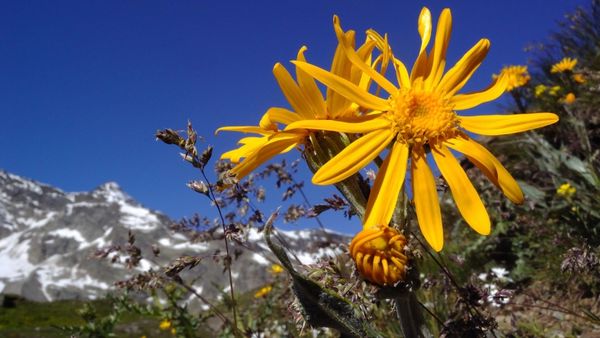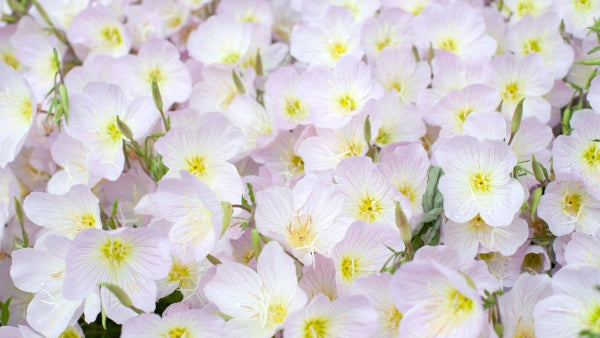Winter Skincare for Mature Skin: A Comprehensive Guide

Winter presents unique challenges for mature skin, but with the right approach, you can maintain a healthy, radiant complexion throughout the season. This comprehensive guide explores the science behind winter skin challenges and provides practical solutions specifically tailored for mature skin.
Understanding the Science of Winter Skin
The combination of aging and harsh winter conditions creates distinctive challenges for mature skin. As we age, our skin naturally produces less collagen and elastin, making it more susceptible to environmental stressors. Winter's low humidity and cold temperatures can exacerbate these effects, leading to increased dryness, sensitivity, and visible signs of aging.
Light and Skin Health: A Hidden Connection
Winter's shorter days affect skin health more profoundly than many realize. Reduced sunlight exposure disrupts several crucial biological processes:
-
Vitamin D synthesis decreases significantly during winter months, affecting the skin's ability to repair and regenerate. This vitamin plays a vital role in maintaining healthy skin barrier function and supporting collagen production. Without adequate levels, skin may become more prone to damage and show accelerated signs of aging.
-
Melatonin production, which regulates our circadian rhythm, becomes disrupted. This hormone serves as a powerful antioxidant, protecting skin cells from environmental damage. When production decreases during winter months, skin becomes more vulnerable to oxidative stress.
The True Impact of Indoor Heating
While indoor heating provides comfort from the cold, it creates an artificially dry environment that can be particularly harsh on mature skin. This low-humidity environment increases transepidermal water loss (TEWL). Think of TEWL as your skin's moisture escape route. In winter, it's like having multiple tiny leaks in a water pipe, causing constant moisture drainage and leading to:
- More pronounced fine lines and wrinkles.
- Compromised skin barrier function.
- Increased sensitivity and irritation.
- Potential exacerbation of existing skin conditions like rosacea and eczema.
Essential Winter Skincare Strategies
1. Cleansing Without Compromise
The foundation of winter skincare begins with proper cleansing practices. For mature skin, implementing specific protocols for both daily skincare and showering helps maintain optimal skin health during harsh winter conditions.
Facial Cleansing Protocol
Selecting appropriate cleansers forms the cornerstone of effective winter skincare. Cream or oil-based formulations prove particularly beneficial during winter months, as they effectively remove impurities while preserving the skin's natural moisture barrier. Look for products containing nourishing ingredients such as jojoba oil, marula oil, or phytoceramides.
Limit cleansing to twice daily to prevent over-washing and stripping the skin of its natural moisturizing factors. Use lukewarm water, as excessive heat can strip essential oils from the skin. After cleansing, apply a hydrating essence while the skin is still damp, followed by a nutrient-rich occlusive serum to lock in moisture.
Shower Protocol for Skin Protection
Hot water exposure during showering presents a significant challenge during winter months, as it can increase trans-epidermal water loss (TEWL). Applying a thin layer of jojoba oil (or a similar gentle, non-comedogenic oil) before showering creates a protective barrier that helps retain moisture during bathing.
2. Layer Skincare for Maximum Hydration
Mature skin requires a sophisticated approach to hydration, especially during winter:
-
First Layer: Begin with a hydrating treatment mist containing humectants like hyaluronic acid, aloe, and glycerin. Apply to slightly damp skin to maximize absorption.
-
Second Layer: Follow with a concentrated micro-serum or essence containing multiple molecular weights of hyaluronic acid to ensure hydration reaches different layers of the skin.
-
Final Layer: Seal in moisture with a rich oil serum or balm containing both emollient and occlusive ingredients. Look for products with phytoceramides, peptides, and nourishing whole-plant oils to restore the skin's natural protective barrier and prevent moisture from escaping.
For an in-depth winter skincare layering strategy check out our post on How to Layer Your Skincare for Radiant Winter Skin.
3. Additional Barrier Protection Strategies
Create a comprehensive strategy to protect against environmental stressors in your home:
-
Use a humidifier in your bedroom and office to maintain optimal dermal humidity levels (40-60%).
-
Limit blue light exposure from electronic devices, as it increases reactive oxygen species (ROS) that contribute to premature skin aging. If you must work in front of a screen for long periods, consider blue light glasses and wear sunscreen for additional protection.
-
Always apply a non-toxic broad-spectrum SPF 30 or higher, even indoors and on cloudy days. Look for formulations containing additional antioxidants like vitamin C or niacinamide.
Advanced Treatment Protocols
Daily Winter Skincare Regime
Morning Routine (Daily):
- Gentle cleanse (pH-balanced cleanser, gel, or oil).
- Hydrating facial essence or toner.
- Antioxidant serum (wait 60 seconds).
- Moisturizer or occlusive balm.
- SPF 30+ (essential even in winter).
Evening Routine (Daily):
- Double cleanse if wearing makeup.
- Treatment serum.
- Rich moisturizer.
- Five-minute facial massage during moisturizer application.
- Additional occlusive layer in extremely dry conditions.
Weekly Treatments
- Gentle Exfoliation: Once weekly, use a mild chemical exfoliant containing lactic acid or PHAs (polyhydroxy acids) to remove dead skin cells without irritation.
- Hydrating Masks: Twice weekly, apply a nourishing mask containing ingredients like Manuka honey, whole-plant oils, or hyaluronic acid to deeply hydrate and plump the skin.
Monthly Treatments
- Red Light Therapy: Stimulates collagen production and reduces inflammation.
- Gentle Facial Massages: Improves circulation and lymphatic drainage to support cellular repair.
Troubleshooting Common Winter Skin Issues
Persistent Dry Patches
- Immediately discontinue exfoliating products.
- Apply phytoceramide-rich serum every 4-6 hours.
- Use a facial essence or mist under serum and an occlusive balm at night.
Redness and Sensitivity
- Incorporate products with arnica montana or bearberry extract to calm skin.
- Maintain skin temperature stability and apply targeted anti-inflammatory treatments.
Flaking and Peeling
- Increase healthy fat intake through diet.
- Apply facial oil serum before moisturizer.
- Use overnight moisture masks twice weekly.
Lifestyle Factors for Optimal Results
Internal Hydration
- Drink adequate water (aim for 8-10 glasses daily).
- Consume hydrating foods like bone broth, seasonal squash, and leafy greens.
- Include omega-3-rich foods like salmon, walnuts, and flaxseeds in your diet.
Stress Management
- Practice regular meditation or deep breathing exercises.
- Maintain a consistent sleep schedule.
- Engage in gentle exercise appropriate for your fitness level.
When to Seek Professional Help
Consult a dermatologist if you experience:
- Persistent dryness or irritation that doesn't respond to home care.
- Unusual skin changes or new sensitivities.
- Signs of infection or severe inflammation.
- Significant changes in skin texture or appearance.
Winter skincare for mature skin requires a thoughtful, holistic approach. By understanding the science behind seasonal skin changes and implementing these targeted strategies, you can maintain healthy, radiant skin throughout the winter months. Consistency is your greatest skincare ally—give your skin time, patience, and care.
Beyond this guide, remember that your skin tells a story. Winter is not just a season to survive, but an opportunity to nurture and understand your unique skin journey.
References:
-
[1] Zhang, et al. (2023) "Winter Skin Barrier Function in Mature Skin," Journal of Investigative Dermatology, 134(6), 1649-1657.
-
[2] Richardson, M., et al. (2023) "The Role of Ceramides in Skin Barrier Function," International Journal of Cosmetic Science, 45(3), 245-253.
-
[3] Yamamoto, K., et al. (2024) "Impact of Environmental Factors on Mature Skin," Clinical Dermatology Review, 42(1), 12-24.
-
Journal of Dermatological Science (2022): Comprehensive review of age-related skin changes
-
International Journal of Cosmetic Science: Humidity's impact on mature skin barrier function



